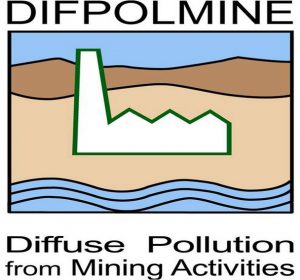
Project title: „DIFPOLMINE” Diffuse pollution from mining activities
Funding Programme: EU Life
Project Identification Number: LIFE 02 ENV/F/000291
Project duration: 01. 10. 2002 – 31. 12. 2006
Project type: Demonstration project
Project partners:
ADEME, France, Agence de l’Environnement et de la Maitrise de l’Energie, France
IRH Génie de l’Environment, France
Limburgs Universitair centrum, Belgium
Budapest University of Technology and Economics
Project title: „DIFPOLMINE” Diffuse pollution from mining activities
Funding Programme: EU Life
Project Identification Number: LIFE 02 ENV/F/000291
Project duration: 01. 10. 2002 – 31. 12. 2006
Project type: Demonstration project
Project partners:
ADEME, France, Agence de l’Environnement et de la Maitrise de l’Energie, France
IRH Génie de l’Environment, France
Limburgs Universitair centrum, Belgium
Budapest University of Technology and Economics
Summary
The Difpolmine project aimed to reduce pollutant flows through both water and air in the area of the former Salsigne and Combe du Saut mines. It planned to develop a new cleaning system that would use, but also go beyond traditional cleaning treatments of excavation, confinement and solidification. In particular, it sought to optimise water management systems in the area and investigate the feasibility of an adapted soil phytostabilisation methodology to minimise residual and diffuse pollution and its subsequent impact. Phytostabilisation consists in using plants which are able to contain, degrade or eliminate pollutants such as metals and pesticides from the medium in which they are contained. Whilst the project looked to demonstrate the applicability of this technique to the specific conditions of the project area in France, it also aimed to prove its transferability to a different mining site in Hungary: a closing zinc and lead mine at Gyöngyösoroszi. It thus hoped to provide an example and source of information for managers of metal-polluted sites in a range of countries and sites. The project contributed to the development of a full treatment plan for the Gyöngyösoroszi mine site in Hungary, based on a study of the adaptation of the project methodology to its particular characteristics. This shows the potential for use of adapted versions of this methodology across various sites around Europe.
Project Work at the Hungarian demonstration site
The postmining activities at the Hungarian site required the management of both the point and diffuse sources. The main environmental risks were related to the mobile Cd and Zn content of the mine wastes, surrounding soils and transported sediments, endangering the surface waters. The toxic metals originated from the exploited sulphide ore veins hosted in andesite rocks. 1–3 pH leachate was produced around the waste rock heaps due to the complex chemical and biological oxidation of the pyrite containing material in contact with the rainwater and runoff. A complete Environmental Risk Management methodology was worked out. The approach was „GIS based” and „catchment scale”, using a three tiered, iterative Environmental Risk Assessment methodology and development of a combined chemical and phytoremediation technology, able to reduce mobility, biological availability of toxic metals, providing long term reduction of toxic metal emission and transport via any pathway. http://www.eugris.info/DisplayProject.asp?p=4512



